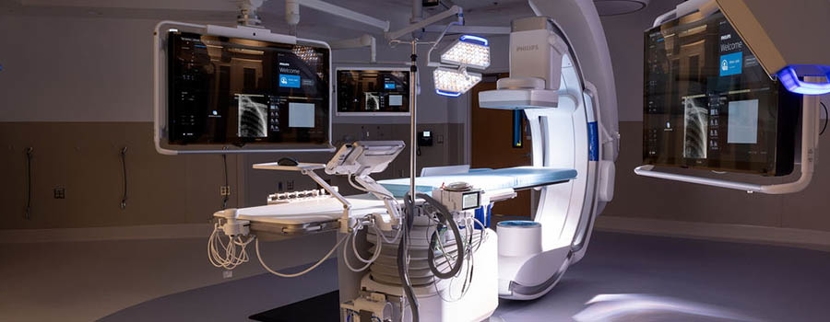The Healthy Heartbeat - Volume 5
Metabolic Syndrome and Heart Disease
Metabolic syndrome is a “five-fecta” of conditions that put you at risk for heart disease, diabetes, stroke, and other health issues. In order to receive a diagnosis of metabolic syndrome, you need to have at least three of these five conditions:
- Elevated blood sugar
- Low levels of HDL cholesterol (the “good” cholesterol)
- High levels of triglycerides
- An “apple-shaped” body with a large waist circumference—more than 35 inches for women or more than 40 inches for men
- High blood pressure
Heart Disease Risk
Metabolic syndrome is not an actual disease; it’s a cluster of conditions that indicate a strong potential for heart disease, diabetes, stroke, and atherosclerosis (fatty buildups in artery walls). Each of the conditions that make up metabolic syndrome is an individual risk factor for cardiovascular disease. With an official diagnosis of metabolic syndrome, the chance of developing a serious cardiovascular condition greatly increases.
Insulin Resistance
Metabolic syndrome is linked to insulin resistance. Normally, your pancreas secretes the hormone insulin to break down the food you eat so that your cells can process glucose (sugar) for your body to use as fuel. If your body’s cells "resist" the insulin, they don’t absorb as much of the glucose and your blood sugar goes up. This triggers your pancreas to churn out increasing amounts of insulin to lower your blood sugar. Insulin resistance is the main symptom of pre-diabetes. Without appropriate lifestyle changes and blood sugar monitoring, people with pre-diabetes will usually eventually develop diabetes. Diabetes increases the risk of heart disease in several ways:
- Over time, high blood sugar damages blood vessels and nerves that control your heart.
- Diabetes is often associated with high blood pressure, which damages artery walls. Having both high blood pressure and diabetes greatly increases your risk for heart disease.
- Diabetes is often linked to an excess of LDL (“bad”) cholesterol, high triglycerides (a type of fat in your blood) and low HDL (“good”) cholesterol. This combination promotes the development of arterial plaque.
Silent, Dangerous, and on the Rise
Up to one third of U.S. adults are either diagnosed or as yet undiagnosed with metabolic syndrome. Other than the thick waist, most of the disorders listed above do not have obvious signs or symptoms, so people won’t necessarily be diagnosed unless they see a doctor—a good reason to have regular checkups. Once the condition has progressed, you may see symptoms of untreated diabetes, including increased thirst and urination, fatigue, and blurred vision.
Risk Factors for Metabolic Syndrome
- Age. Your risk of metabolic syndrome increases with age.
- Ethnicity. Although no ethnic group is immune, in the US, people with Hispanic ancestry, women in particular, have the greatest risk of developing metabolic syndrome.
- Obesity. Being overweight, especially if you have a lot of belly fat, which is a sign of unhealthy visceral fat deep in the abdomen.
- A sedentary lifestyle. People with metabolic syndrome spend a lot of time sitting and don’t tend to exercise.
- Diabetes. People with metabolic syndrome often have a family history of type 2 diabetes. Women who develop gestational diabetes during pregnancy have an elevated risk of developing diabetes later in life.
- Other diseases. Nonalcoholic fatty liver disease, polycystic ovarian syndrome, and sleep apnea are all frequently associated with metabolic syndrome.
Prevention Is Key
A lifelong commitment to a healthy lifestyle can help prevent the conditions that cause metabolic syndrome. You are much less likely to develop it—and thus reduce your risk for cardiovascular disease—it if you follow these commonsense recommendations for heart health and general wellness:
- Get at least 30 minutes of moderate physical activity most days.
- Follow the Mediterranean diet: eat plenty of vegetables, fruits, lean protein and whole grains, and cook with olive oil instead of butter or margarine. Reduce your salt intake.
- Maintain a healthy weight. If you are overweight, losing as little as 5% of your body weight could reduce your risk levels.
- Avoid all tobacco products. If you smoke, QUIT!
Could More ZZ’s Improve Your Heart Health?
By now we all know that getting enough good quality sleep is important for good health. Studies spanning the last 30 years have shown a clear link between lack of sleep and a whole host of serious health issues, including cancer, obesity, depression, lowered immunity, poor memory, and more. But the connection between sleep and heart disease is even more clear: getting less than the recommended 7-8 hours per night for most adults significantly increases your risk for high blood pressure, insulin resistance and diabetes, high cholesterol, and obesity—the diseases that make up metabolic syndrome. Plus, lack of sleep leads to higher levels of inflammation, which contributes to heart disease, and an increase in calcium buildup in the heart’s arteries, which puts you at risk for a heart attack.
Unfortunately, getting enough sleep is often easier said than done. If you aren’t regularly getting a full 7-8 hours of restful sleep, it’s time to look at your lifestyle and see what habits you can change:
- Establish a schedule that you can keep every night—even on the weekends. Going to bed and getting up at the same time every day can train your body to get back into a more normal sleep pattern.
- Avoid caffeine after lunchtime. Some people are particularly sensitive to caffeine and may find that eliminating it completely can improve their sleep.
- Get at least 30 minutes of exercise every day. Not only is it good for your heart, but physical activity also promotes deeper, better quality sleep. Just make sure you don’t exercise too close to bedtime, as that can make it harder to fall asleep.
- Limit alcohol consumption. One or two drinks on occasion is fine but drinking too much will interfere with your sleep. Instead of a nightcap, try a soothing cup of herbal tea.
- Invest in a good mattress. Your goal should be to spend 1/3 of your life in bed, so doesn’t it make sense to find the right mattress for your needs? Lay down on the mattress and move around to ensure it’s comfortable and supportive enough for you. The only way to ensure you get the right mattress is to try it out in the store, so resist the temptation to buy something online based on somebody else’s recommendation. And, if your mattress is more than 8 years old, or shows signs of sagging, it’s probably time to get a new one.
- Turn off all screens (TVs, computers, phones) one hour before bed. The blue light emitted from these devices makes it harder to fall asleep and stay asleep.
- Keep your bedroom cool and dark. The ideal temperature for sleeping is 60-67 degrees. And the older we get, the more important it is to keep our bedrooms dark and quiet. Even the tiny light from your computer or cell phone is enough to disturb your sleep. Tape over illuminated buttons and light on TVs, clocks, or other electronics—you might be surprised what a difference it makes.
- If stress or anxiety sometimes keeps you awake at night, try a weighted blanket. The gentle pressure it applies to various parts of your body can be very calming and soothing, helping you drift off to sleep much easier.
- Set aside 10-15 minutes every night to practice meditation or guided relaxation. Try one of MarinHealth’s free guided meditations here.
Of course, sometimes even the best sleep “hygiene” isn’t enough. It may be tempting to rely on sleeping pills, but those are intended for short-term use only. So, if you’re still having trouble sleeping after making changes and prioritizing good sleep habits, it’s time to talk to your doctor. He or she will want to evaluate you for serious sleep disorders, such as sleep apnea—which can greatly increase your risk for heart disease.








